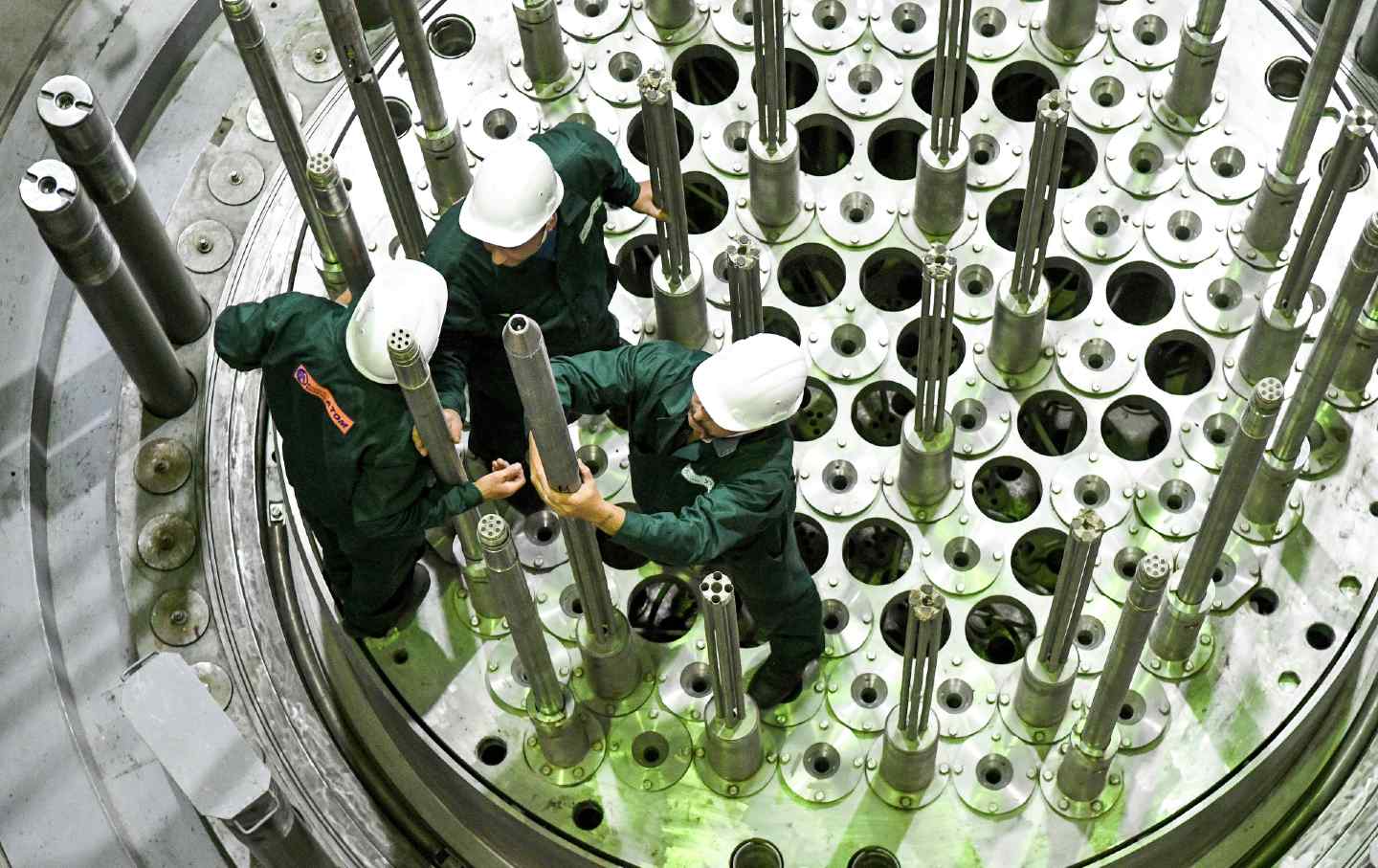Faster Nuclear Power Plants: Trump Administration's New Approach

Table of Contents
Streamlining the Nuclear Regulatory Process
A major hurdle in building nuclear power plants is navigating the complex regulatory landscape overseen by the Nuclear Regulatory Commission (NRC). The Trump administration sought to significantly reduce these delays through regulatory reform aimed at expedited permitting. This involved several key changes:
- Reduced Paperwork: The administration pushed for simplification of licensing applications, reducing the sheer volume of paperwork required for approval. This aimed to minimize bureaucratic bottlenecks and speed up review times.
- Faster Review Times: The NRC's review process was targeted for efficiency improvements. This included setting stricter deadlines for various stages of the approval process and increased staffing for key review teams.
- Risk-Informed Approach: The administration shifted towards a more risk-informed approach to regulation. This meant focusing regulatory scrutiny on areas posing the greatest safety concerns, streamlining aspects with minimal safety implications.
Impact and Criticisms: While these changes aimed to shorten project timelines, they also faced criticism. Concerns were raised about potentially compromising safety standards in the rush to accelerate approvals. The effectiveness of these streamlined processes in actually reducing approval times remains a subject of ongoing debate and analysis.
Financial Incentives and Government Support
To stimulate private sector investment in nuclear energy, the Trump administration introduced various financial incentives:
- Tax Credits: Tax credits were offered to incentivize investment in new nuclear power plant construction and the development of advanced reactor technologies. These offered significant cost reductions for developers.
- Loan Guarantees: The government offered loan guarantees, reducing the financial risk for private investors and making it easier to secure funding for large-scale nuclear projects. This was critical, as nuclear plant construction requires massive upfront capital investment.
- Direct Government Funding: In some cases, direct government funding was allocated for research and development of advanced reactor designs and for specific nuclear power plant projects considered crucial for national energy security.
Effectiveness: The effectiveness of these incentives in attracting significant private investment remains a topic of ongoing discussion. While some projects benefited, the high upfront costs and perceived risks associated with nuclear power continue to present major challenges for the private sector.
Technological Advancements and Innovative Designs
The Trump administration recognized the potential of advanced reactor designs to revolutionize nuclear power plant construction. A significant focus was placed on:
- Small Modular Reactors (SMRs): SMRs offer a potentially transformative approach. Their smaller scale facilitates factory production of components, significantly reducing on-site construction time and costs. They also offer greater flexibility in deployment, making them suitable for various locations and energy needs.
- Advanced Reactor Designs: Beyond SMRs, the administration supported research and development into other advanced reactor designs, aiming to improve safety, efficiency, and reduce construction time. These designs often incorporate features such as passive safety systems, which enhance inherent safety and reduce the complexity of traditional designs.
Challenges: While promising, the widespread adoption of these advanced technologies faces challenges. These include the need for further testing and demonstration projects to validate their safety and economic viability, as well as the development of a robust domestic supply chain to support their construction.
Focus on Domestic Manufacturing and Supply Chain
A key aspect of the Trump administration’s strategy was strengthening the domestic nuclear industry and its supply chain. This involved:
- Buy American Policies: Policies prioritizing American-made components for nuclear power plant construction were implemented to stimulate domestic manufacturing and job creation.
- Supply Chain Development Initiatives: Government programs aimed to support the development of a robust domestic supply chain for nuclear components, reducing reliance on foreign suppliers and shortening lead times.
Impact: These policies aimed to create American jobs and enhance the competitiveness of the domestic nuclear industry. However, challenges remained in achieving self-sufficiency and ensuring the domestic supply chain could meet the demands of an expanding nuclear energy sector.
Conclusion
The Trump administration’s approach to accelerating nuclear power plant construction involved a multifaceted strategy, encompassing regulatory reform, financial incentives, and a focus on technological innovation and domestic manufacturing. While some progress was made in streamlining the regulatory process and encouraging technological advancements, challenges persisted in attracting significant private investment and overcoming the inherent complexities and costs associated with nuclear power. The long-term impact of these policies on the future of nuclear energy remains to be seen. However, the need for cleaner energy sources and the potential of faster nuclear power plants continues to drive innovation and investment in this vital sector. Learn more about the advancements in faster nuclear power plants and the ongoing debate surrounding this crucial energy source. Research the current state of accelerated nuclear power projects and their implications for the future of energy. Explore how streamlined nuclear regulations are shaping the nuclear industry.

Featured Posts
-
 Nine Month Space Mission Details From Cbs News Report
May 11, 2025
Nine Month Space Mission Details From Cbs News Report
May 11, 2025 -
 Boston Celtics Pritchard Signs Endorsement Deal With Converse
May 11, 2025
Boston Celtics Pritchard Signs Endorsement Deal With Converse
May 11, 2025 -
 Jazz Chisholm Jr S Hot Start Is He Outperforming Aaron Judge
May 11, 2025
Jazz Chisholm Jr S Hot Start Is He Outperforming Aaron Judge
May 11, 2025 -
 Faber Under Fire For Snubbing Coa Volunteers Honours
May 11, 2025
Faber Under Fire For Snubbing Coa Volunteers Honours
May 11, 2025 -
 Ufc 315 Muhammad Vs Della Maddalena Odds Prediction And Analysis
May 11, 2025
Ufc 315 Muhammad Vs Della Maddalena Odds Prediction And Analysis
May 11, 2025
